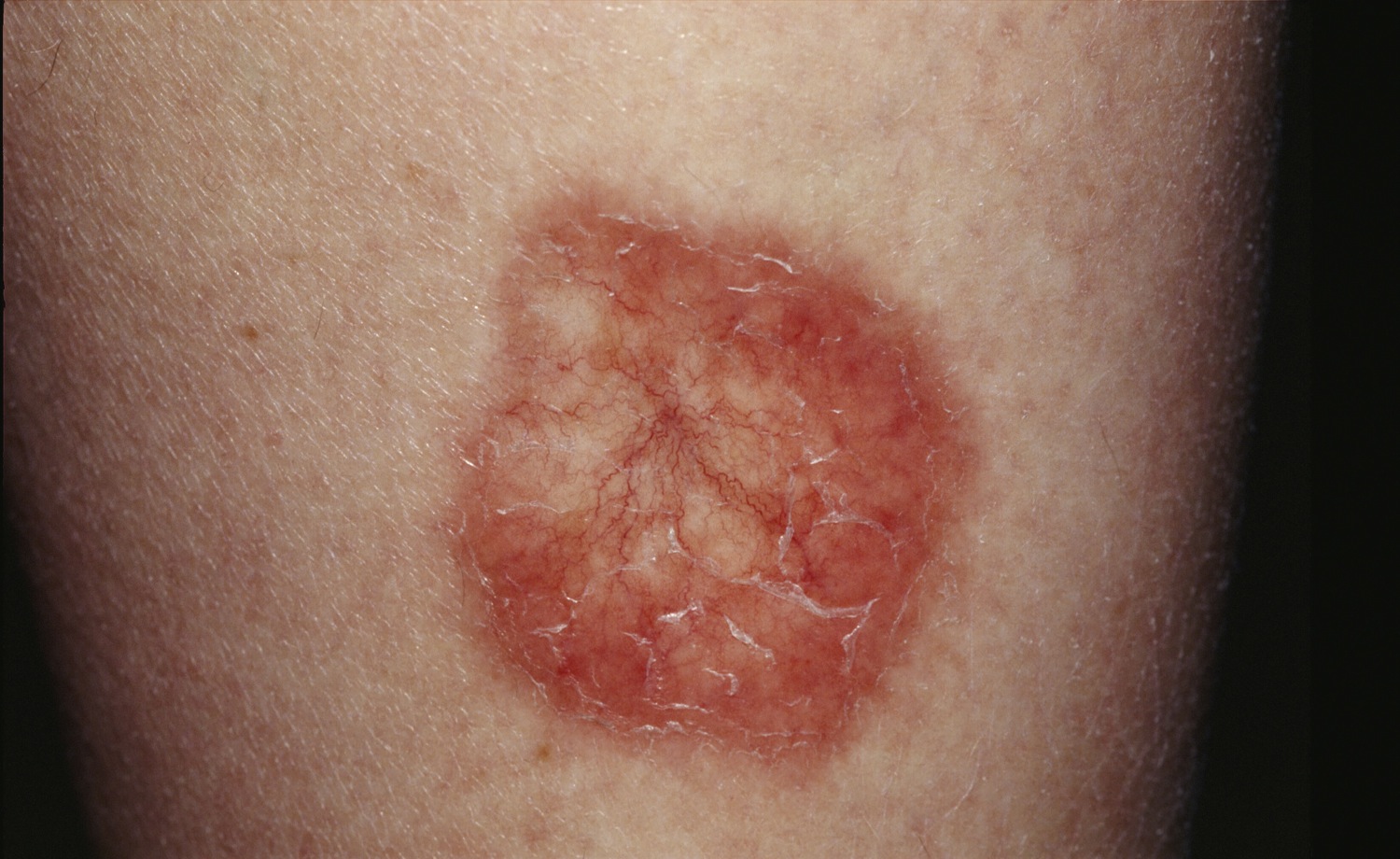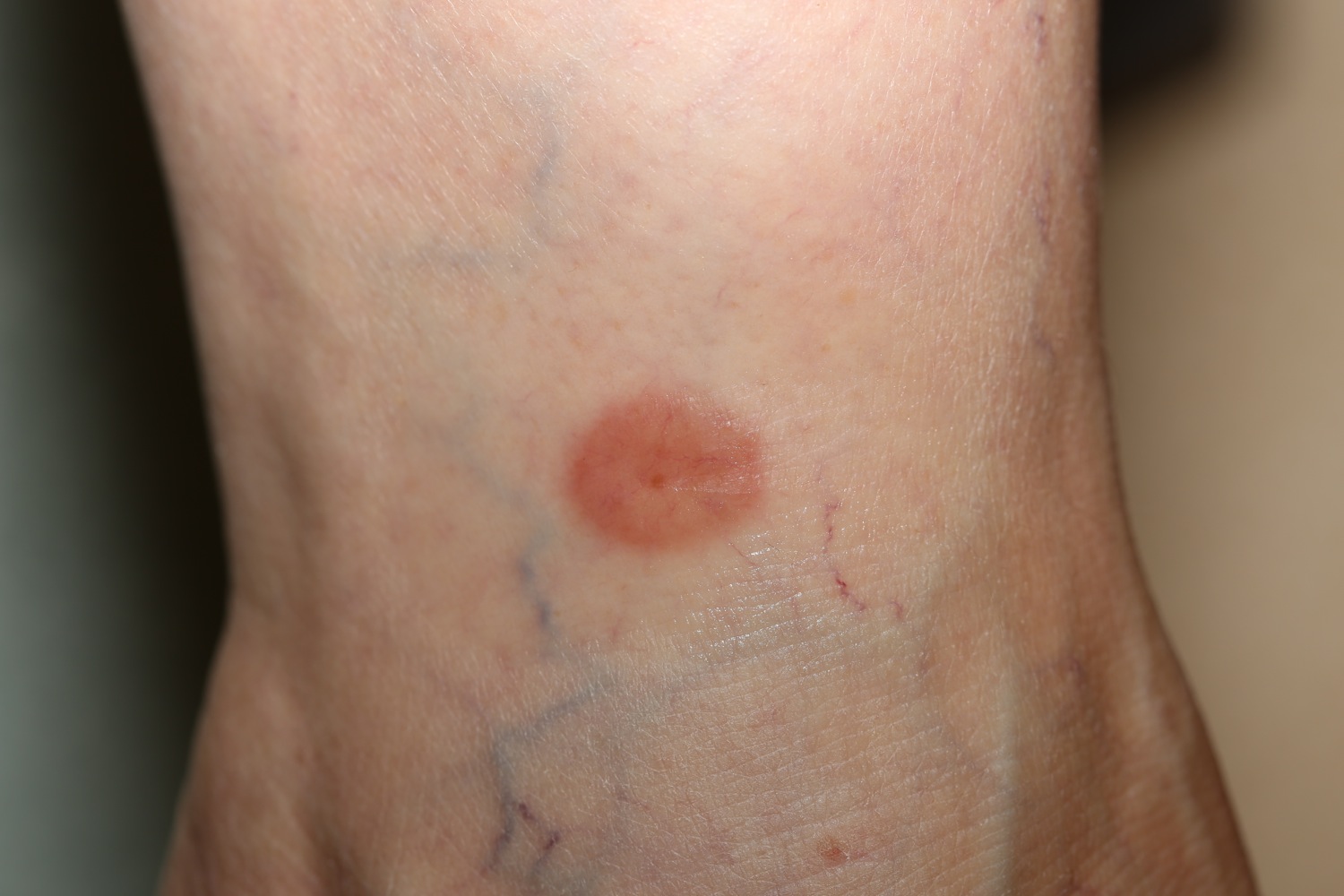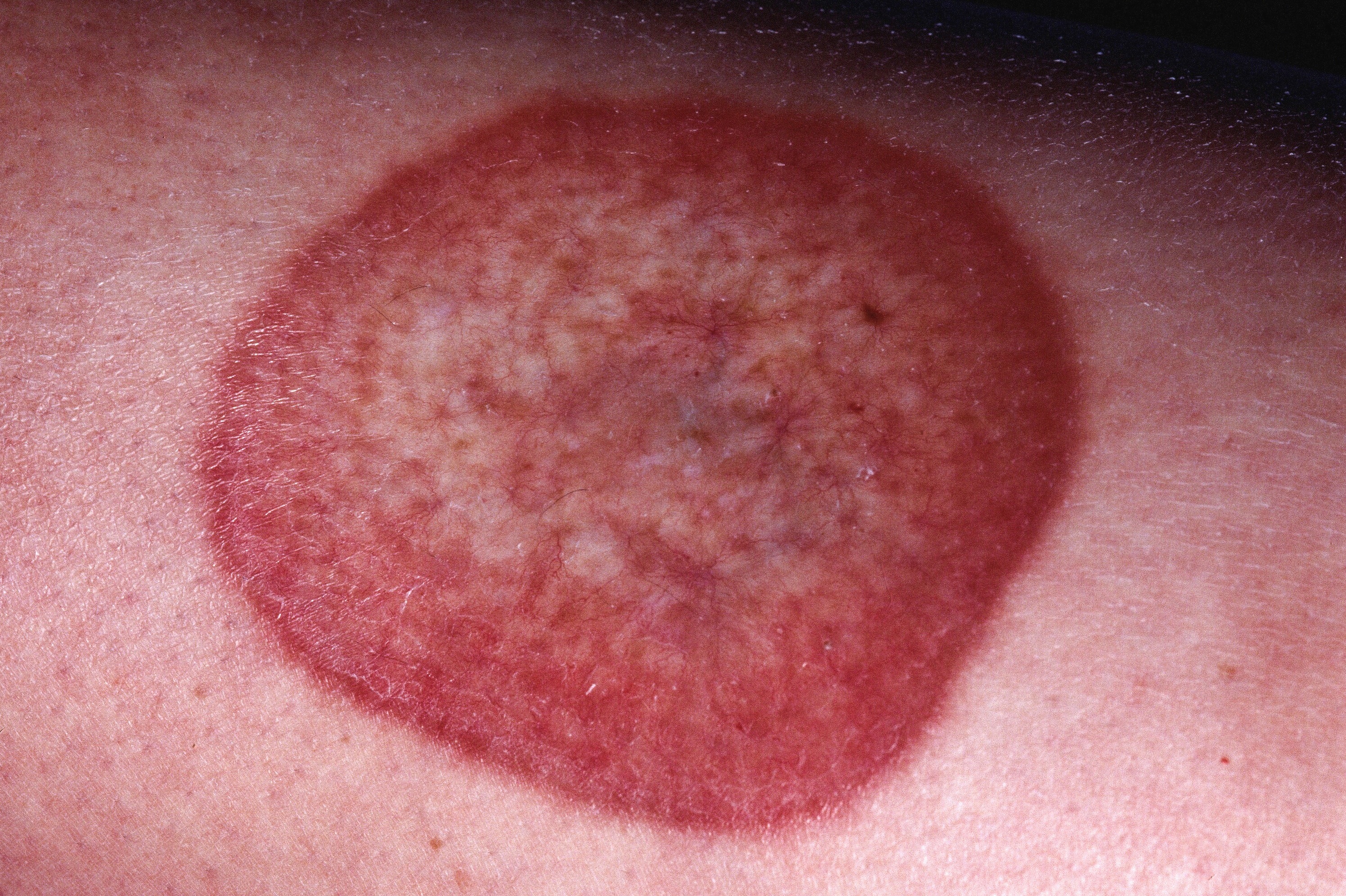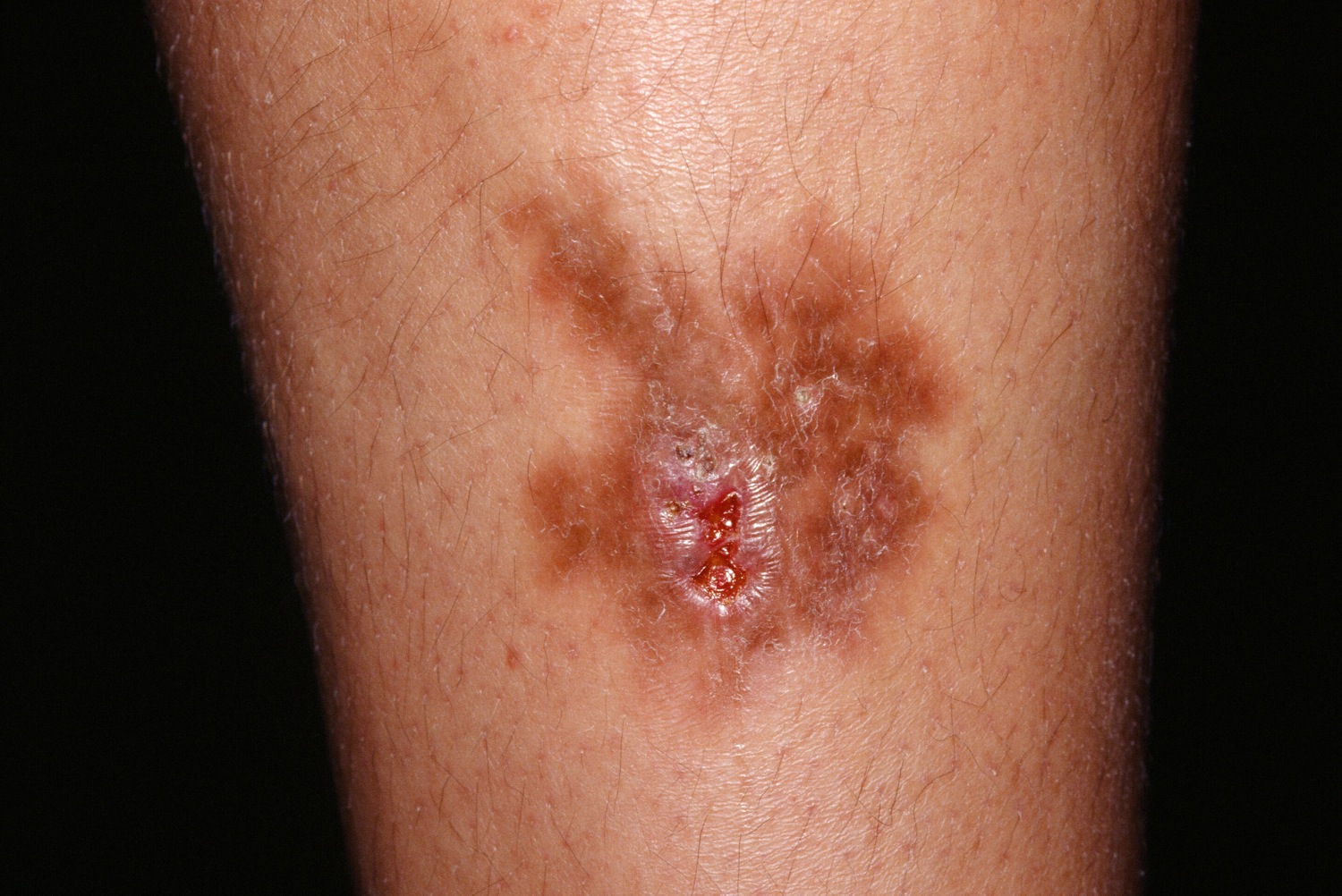
A well-demarcated, yellow-red plaque with epidermal atrophy and telangiectasias on the shin of a diabetic.

A well-demarcated, yellow-red plaque with epidermal atrophy and telangiectasias on the shin of a diabetic.
Necrobiosis lipoidica (NL) (formerly necrobiosis lipidica diabeticorum) is an idiopathic granulomatous skin disorder typically associated with diabetes. The etiology is probably multifactorial with microangiopathy, immune complex formation, abnormal collagen synthesis and breakdown, and altered hemostasis all thought to play a part.
Well-demarcated, yellow-red plaques with epidermal atrophy on the shins is characteristic. Initially a red plaque forms. As it spreads, the center becomes depressed and yellow with telangiectasias. Severe ulceration is not uncommon. Lesions occurring in sites other than the legs occur in about 15% of patients. Partial alopecia, hypohidrosis and anesthesia have been reported within the plaques. Occasionally, overlap cases with granuloma annulare have been reported. In one review of 100 cases, the average age was 50 years (15-95 range), 77% of patients were women, ulceration occurred in 33% and thyroid disorders were found in 15% of cases.

An early lesion of NL showing only an edematous red plaque.

A well-demarcated, red plaque on the shin of a diabetic.

This lesion of NL shows ulceration and significant pigmenation.
Homepage | Who is Dr. White? | Privacy Policy | FAQs | Use of Images | Contact Dr. White